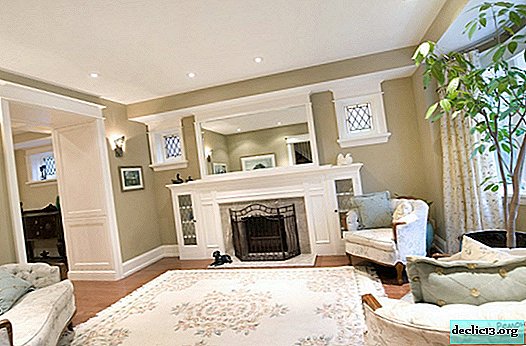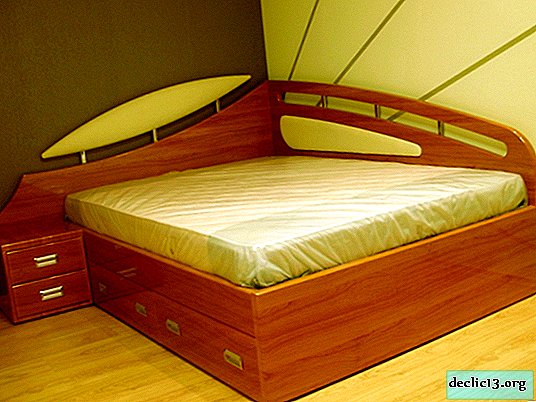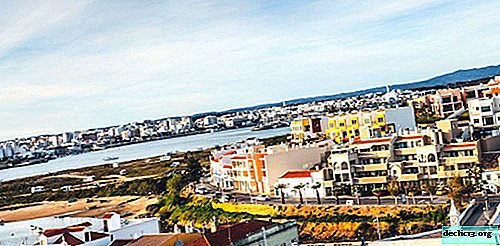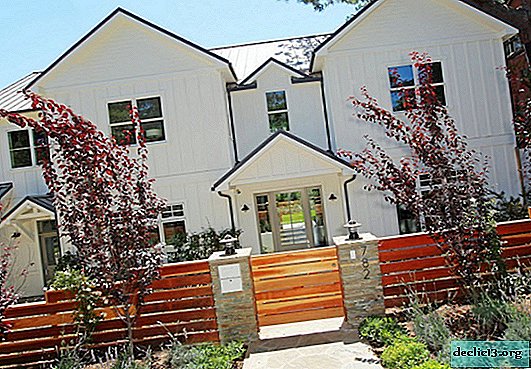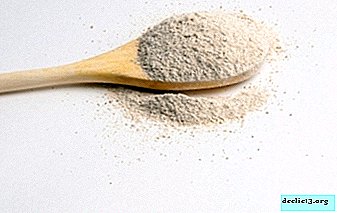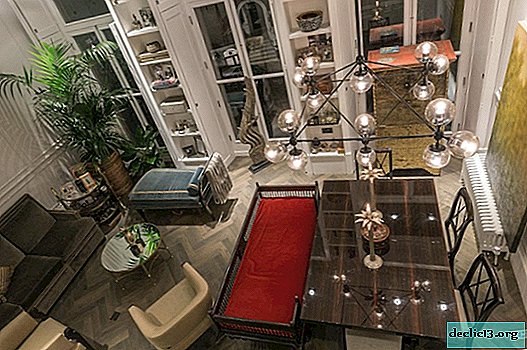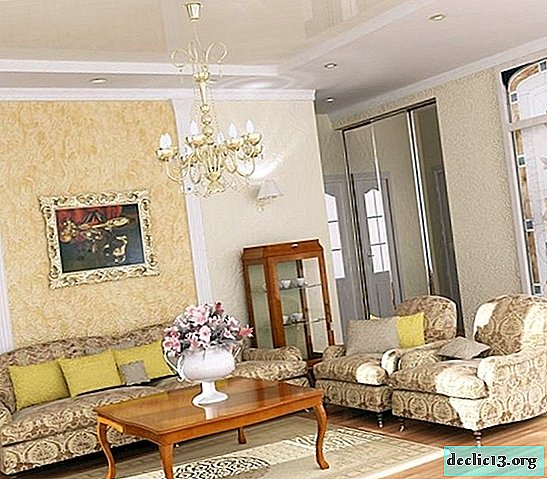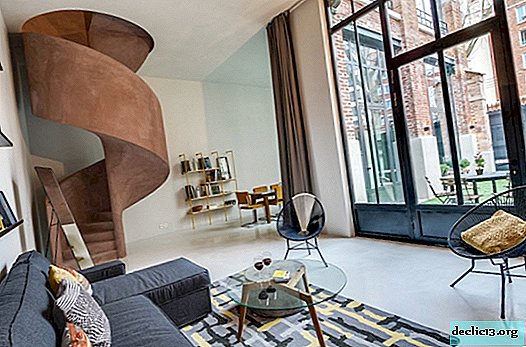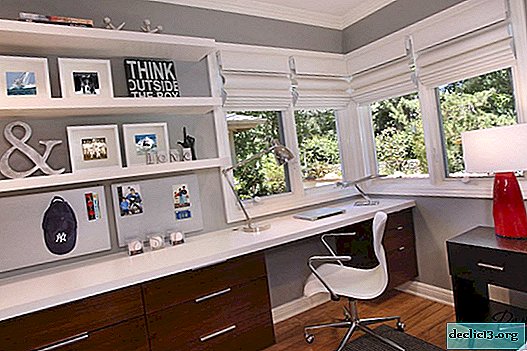Primer: what it is and how to work with it
Surely many of us remember that just recently, they primed the surface in three ways: wallpaper glue (if it was a primer in front of the wallpaper), water diluted with silicate or PVA glue or paint diluted in a solvent. But today the building materials market offers a wide selection of a wide variety of primers: from insulating and improving adhesion, to anticorrosion, fungicidal and other types of primers. But what is a primer at all? What types are there? Where is it used and what is it for? Let's figure it out together.
A primer is a homogeneous liquid composition containing various components (resin, glue, oil and other substances), which, in turn, contribute to the formation of a film and give the surface special properties. A primer is produced on the basis of various materials, for example, acrylic, mineral, alkyd and others.
Why do we need a primer? The answer is simple - for high-quality application of subsequent material. After all, any finishing work (whether it is plastering, painting, puttying or something else) requires preliminary application of a primer. Such a process is necessary regardless of the surface: whether it is a ceiling, walls, floor, wood, metal or even concrete. Otherwise, the future finishing material will "fall" badly. The primer betrays strength and reliability, it determines whether the surface will crack, delaminate or get wet. Another primer is used for "dirty" (often from building mixtures) finishing surfaces.
What are the types of primers?
- A primer based on mineral components is used for primary processing and leveling of surfaces made of special mineral materials: plaster, brick, concrete, as well as expanded clay concrete and gas silicate blocks. And cement is used as a binder.
- Primer based on acrylic components is considered a universal water-soluble composition. This primer is used in the processing of surfaces made of cement, concrete, wood and drywall, as well as coated with latex, acrylic and alkyd paints. Acrylic primer does not have a sharp specific smell and dries such a mixture within 2-5 hours. Such a primer is not recommended for metal processing, as after some time rust may appear.
- An alkyd-based primer is used to treat a wooden surface. This mixture dries within 10-15 hours. It is produced with various impurities: for example, a mixture with zinc phosphate has anti-corrosion properties, and a mixture based on zinc chromium, although it has the same properties, is not used for gypsum surfaces. Less often, an alkyd primer is used to treat complex surfaces: tiles, fiberglass, galvanized steel.
- Glifthal primer is used to coat metal surfaces. But you can use this mixture only in dry rooms. Such a primer dries for at least a day.
- Perchlorovinyl primer is excellent for metal surfaces (also used for treating concrete or plastered walls). The material dries in 1 hour at a temperature of 18-20 degrees. Not recommended for indoor use.
- The polyvinyl acetate primer acts only as the basis for the polyvinyl acetate paint. The mixture must be applied before staining and left it for about 30-40 minutes to dry.
- The polystyrene primer contains toxic substances, so it is highly recommended to use the mixture indoors. It is most often used for processing wooden or plastered surfaces.
- Phenolic primer is used for wood and metal surfaces. The mixture dries within 10-12 hours.
But if there are so many types, then how to choose the primer? Everything is simple - the mixture is selected depending on the surface material. Let's take a closer look.
Primed brick, concrete and other mineral surfaces
What is related to mineral surfaces? These are concrete, brick, cinder block, plaster and other materials, which are most often used as the basis of the ceiling or walls of the room. In this case, when processing a “bare wall”, a deep penetration primer is best. The mixture is able to deeply soak, hold together the base particles and give the surface a porous appearance. This process increases the adhesion of the subsequent layer with the base. Also, such mixtures often have antifungal additives, which undoubtedly affects the surface well.
What to do if the surface is porous, loose or fragile? In this case, we need a reinforcing primer. Such a solution has a greater number of special adhesives, due to which it significantly strengthens the top layer of the surface. As practice shows, the material is most often used in old buildings, where the plaster does not have enough cement in its composition. It is important to remember that if the plaster exfoliates, then the strengthening primer will not save it, because the mixture only strengthens to the depth of possible penetration.
And between the coating layers a general-purpose primer (universal) is applied, which improves adhesion and promotes even application of subsequent materials. First of all, it concerns the paint, which emphasizes all the bumps and surface defects.
What to choose if it is necessary to treat a surface that contains alkali with organosoluble paints (new concrete, cement screed or a surface treated with special fire-fighting mixtures). An anti-alkaline primer is best suited for this procedure.
And if it is necessary to ground a smooth concrete slab, drywall or a surface painted with oil paint? To treat these smooth and hard surfaces, it is best to use a non-contact primer. The solution contains cementitious additives and sand, which makes the surface more rough.
Grounded tree
Before the primer of the tree, the surface must be treated with special impregnations (they have antiseptic, fungicidal, pesticidal, and other useful properties). This is necessary to prevent fungus, rot, insects and other "pests". To achieve the best result, it is recommended to apply mastic in several layers. Some types of primer are applied to a wooden surface before painting, and in some cases even replace it. This mixture promotes even application of paint and saves on consumables due to weaker absorption.
There is even a primer for conifers that can dissolve the resin. Such a solution is usually divided into two types: dissolving and washing. After such a procedure, special surface treatment may be necessary.
Primed metal glass, plastics, tile, ceramics and other materials
What to do if it is necessary to prime the metal with traces of corrosion? To do this, apply a rust converter to the surface. Next, we carry out a mechanical cleaning and only then can we start the primer. It is best to use an anti-corrosion primer.
With other materials, a primer with increased adhesion is best handled. There are even primers that do not miss various spots of fat, soot, etc. You can read more about rough wall decoration here.



